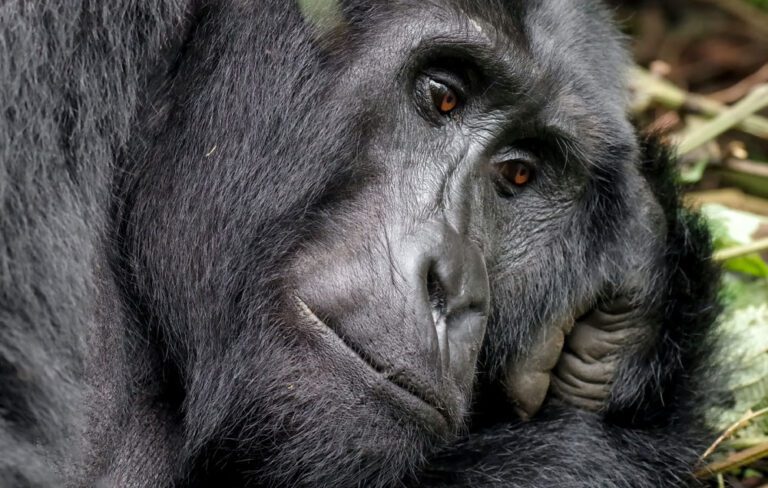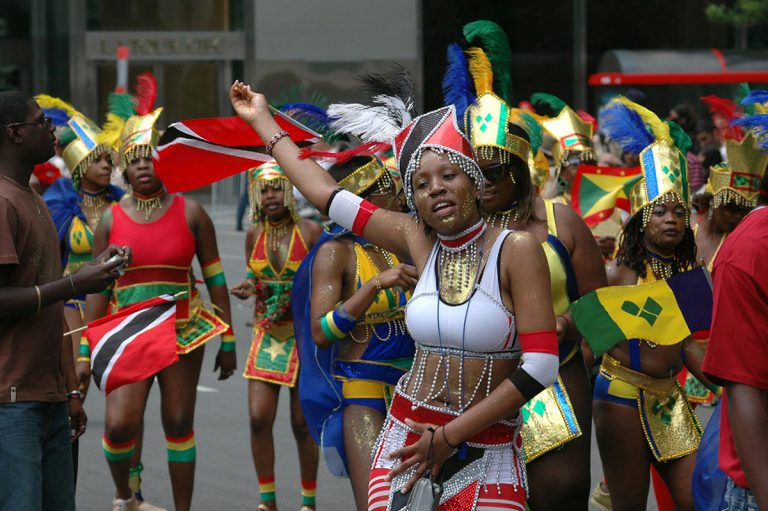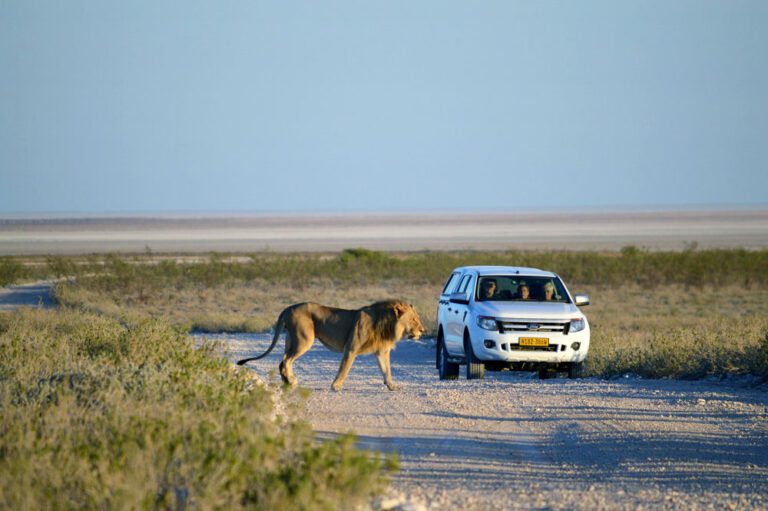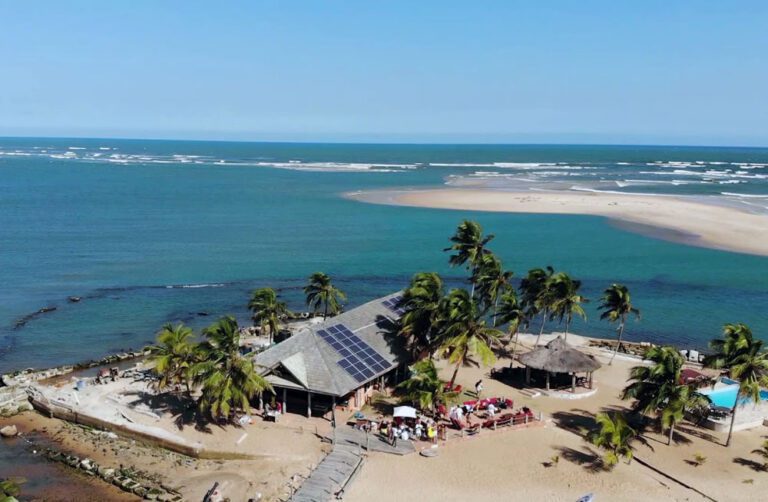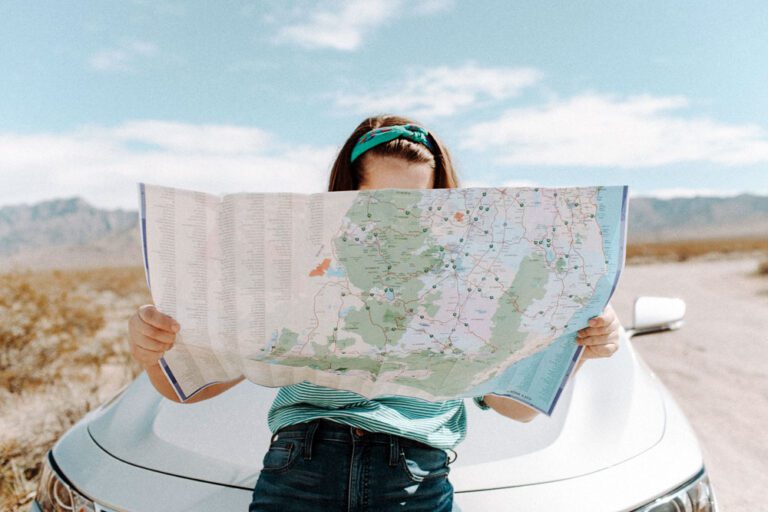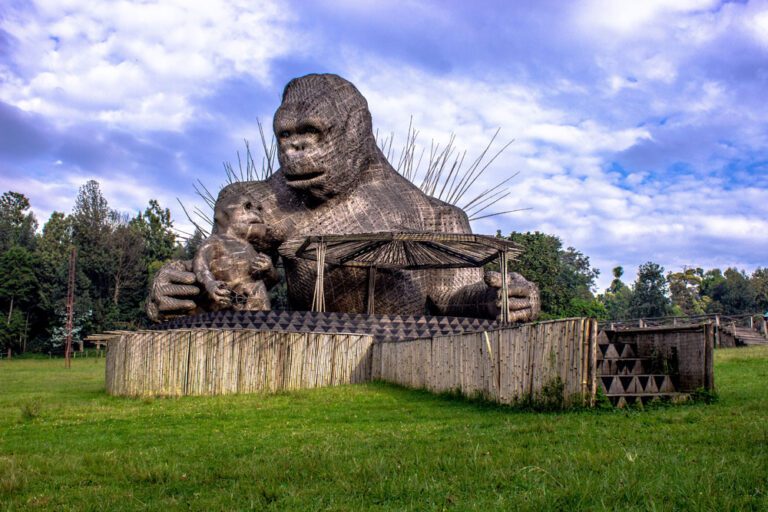Best Time to Visit Morocco: A Comprehensive Guide
Last updated on June 8th, 2023 at 08:00 pm
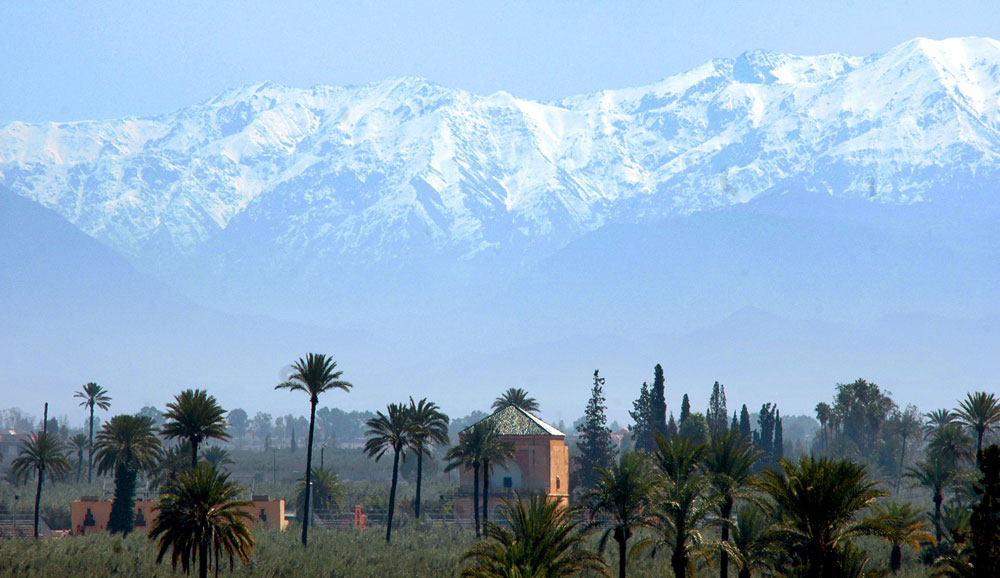
If you’re planning a trip to Morocco, you might be wondering when the best time to visit is. The answer to this question depends on a few factors, such as your travel preferences and what you want to see and do during your trip. Morocco is a diverse country with a range of climates and landscapes, so the best time to visit can vary depending on where you plan to go.
Generally speaking, the best time to visit Morocco is during the spring (mid-March to May) or the fall (September to November). During these seasons, the weather is mild and pleasant, making it ideal for exploring the country’s many attractions.
Additionally, these seasons tend to be less crowded than the peak summer months, so you can avoid the crowds and enjoy a more relaxed travel experience. However, keep in mind that the weather can be unpredictable, so it’s always a good idea to pack layers and be prepared for any conditions.
Weather
When planning your trip to Morocco, it’s important to consider the weather. Morocco has a Mediterranean climate, with hot summers and mild winters. However, the weather can vary greatly depending on the region you are visiting. Here are some tips that will help you understand the weather in Morocco.
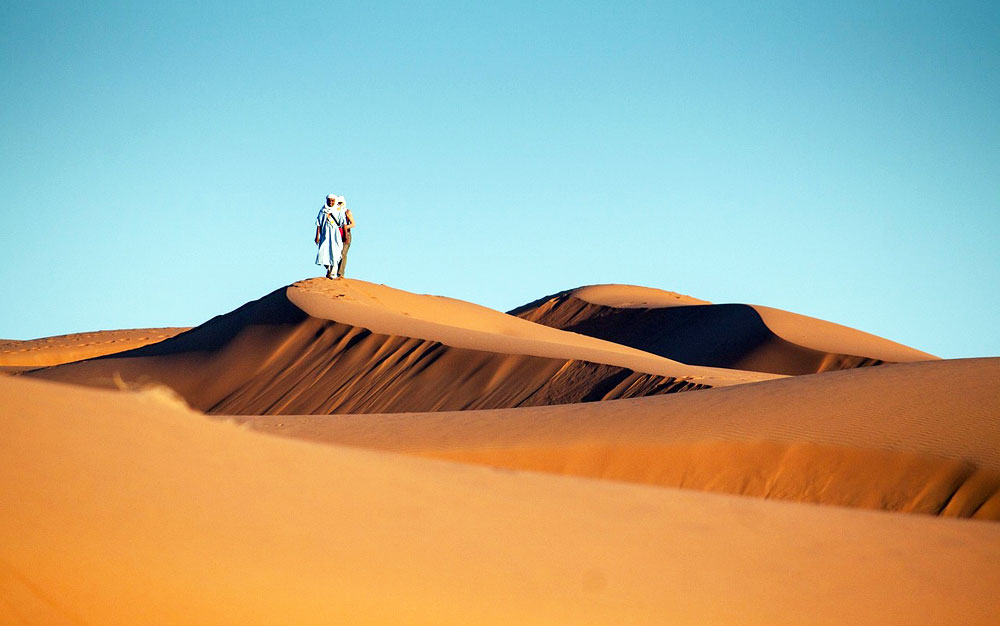
Temperature
The temperature in Morocco varies depending on the season and the region. In general, the coastal areas are cooler than the inland areas. The temperature in the Sahara Desert can be extreme, with daytime temperatures reaching over 100°F (38°C) in the summer and dropping below freezing at night in the winter. The Atlas Mountains can also be quite cold in the winter, with temperatures dropping below freezing at night.
Rain
Morocco has a rainy season that runs from November to March. During this time, you can expect heavy rain in the northern and central regions of the country. The southern regions, including the Sahara, are much drier during this time. However, it’s important to note that rain can occur at any time of the year in Morocco, so it’s always a good idea to pack a raincoat or umbrella.
Wind
Morocco can be quite windy, especially in the coastal regions. The winds can be particularly strong in the spring and summer months, with gusts of up to 50 mph (80 km/h) in some areas. If you’re planning on visiting the beach or going on a desert trek, it’s important to be prepared for windy conditions.
Sandstorms
Sandstorms can occur in Morocco, particularly in the Sahara Desert. These storms can be quite intense, with strong winds and blowing sand. If you’re planning on visiting the desert, it’s important to be prepared for sandstorms by bringing goggles, a face mask, and protective clothing.
Overall, the best time to visit Morocco is during the spring (mid-March to May) or fall (September to October) when the weather is warm but pleasant. However, it’s important to consider the region you are visiting and pack accordingly.
Crowds
When planning a trip to Morocco, it’s important to consider the crowds. The country can get very busy during peak tourist season, which can impact your travel experience.
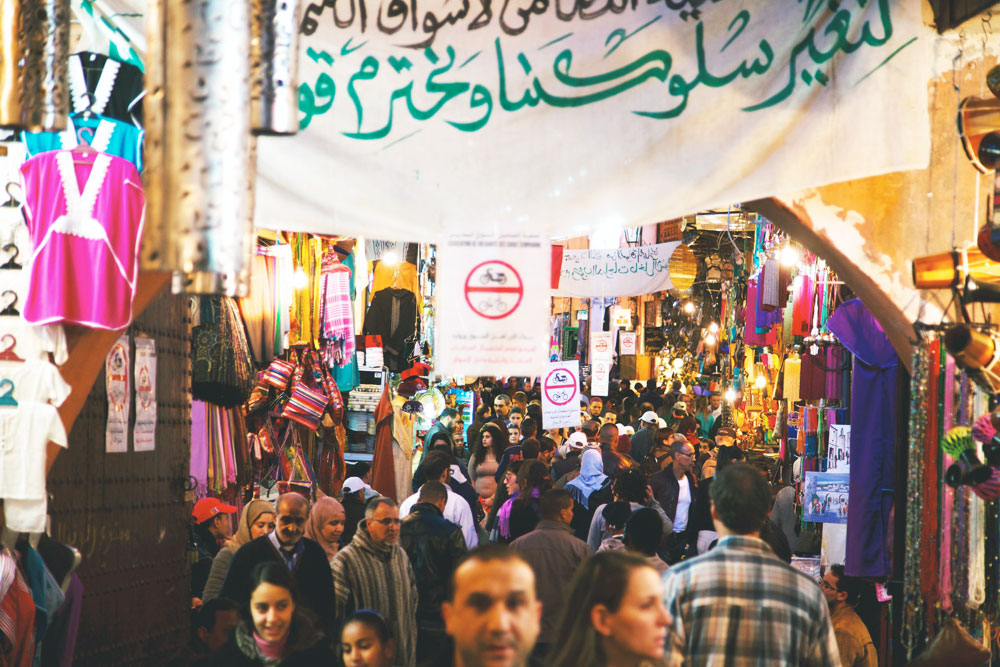
Tourist Crowds
Morocco attracts a lot of tourists, especially during the peak travel season. Marrakesh is particularly popular, with many visitors coming to see the beautiful architecture and bustling markets. If you’re planning to visit Marrakesh, brace yourself for bustling crowds and lengthy queues at the must-see hotspots.
Other popular tourist destinations in Morocco include Casablanca, Fes, and Tangier. While these cities may not be as crowded as Marrakesh, they still see a fair amount of tourist traffic. If you’re looking for a quieter experience, you may want to consider visiting some of the smaller towns and villages in Morocco.
Smaller Crowds
If you want to avoid the crowds consider traveling during the off-season. The winter months are generally quieter, although some areas can be quite cold and rainy. Alternatively, you can visit in the shoulder season, which is typically March to May or September to November. The weather is still pleasant, but there are fewer tourists.
Another way to avoid the crowds is to visit less popular destinations. For example, instead of staying in Marrakesh, you could visit the nearby town of Essaouira. This coastal town is much quieter than Marrakesh but still offers plenty of things to see and do.
Finally, consider visiting attractions during off-peak hours. For example, many tourists visit the Jardin Majorelle in Marrakesh in the morning. If you visit in the afternoon, you may find that it’s much quieter.
Overall, there are ways to avoid the crowds in Morocco. Whether you choose to travel during the off-season, visit less popular destinations, or simply adjust your schedule, you can have a great travel experience without feeling overwhelmed by crowds.
Seasons
Morocco has a delightful Mediterranean climate, offering hot and dry summers alongside mild winters that create a pleasant and inviting atmosphere. Choosing the best time to visit this captivating country largely hinges on your specific interests and desired activities. By aligning your plans with the ideal season, you can ensure an unforgettable experience tailored to your preferences.

Summer (June to August)
The summer months in Morocco can be very hot, especially in the inland areas. Temperatures can reach up to 100°F (38°C) during the day. However, the coastal areas have a more moderate climate, with temperatures averaging around 80°F (27°C). The Gnaoua World Music Festival takes place in Essaouira each June, attracting nearly 500,000 people.
Fall (September to November)
Fall is a great time to visit Morocco, as the weather is mild and pleasant. The temperatures are generally between 60°F (16°C) and 80°F (27°C), making it perfect for outdoor activities. Immerse yourself in the enchanting atmosphere of the Imilchil Marriage Festival, an annual celebration held in September in the charming village of Imilchil, where the local community joyously embraces its unique marriage traditions.
Winter (December to February)
Winter in Morocco can be cold, especially in the mountains, where snowfall is common. However, the coastal areas have a more moderate climate, with temperatures averaging around 60°F (16°C). The winter months are a great time to visit the cities, as the crowds are smaller, and the airfare and lodging rates are lower.
Spring (March to May)
Experience the breathtaking transformation of Morocco during the vibrant spring season, where nature awakens with a colorful display of blooming flowers and lush green landscapes. With temperatures ranging from a delightful 60°F (16°C) to 75°F (24°C), this is the perfect time to undertake your city explorations in captivating destinations such as Marrakech, Fes, and Chefchaouen.
Soak in the pleasant warmth and immerse yourself in the rich tapestry of Moroccan culture during this idyllic time of year. The early spring is when the almond trees start budding, creating a beautiful sight to see.
Shoulder Season
The shoulder season in Morocco is between November and February. The weather is cooler, but still pleasant, making it perfect for outdoor activities. This is also a great time to visit the cities, as the crowds are smaller, and the prices are lower.
Top Sights
Here are the must-visit attractions that you absolutely cannot afford to miss during your trip to Morocco!
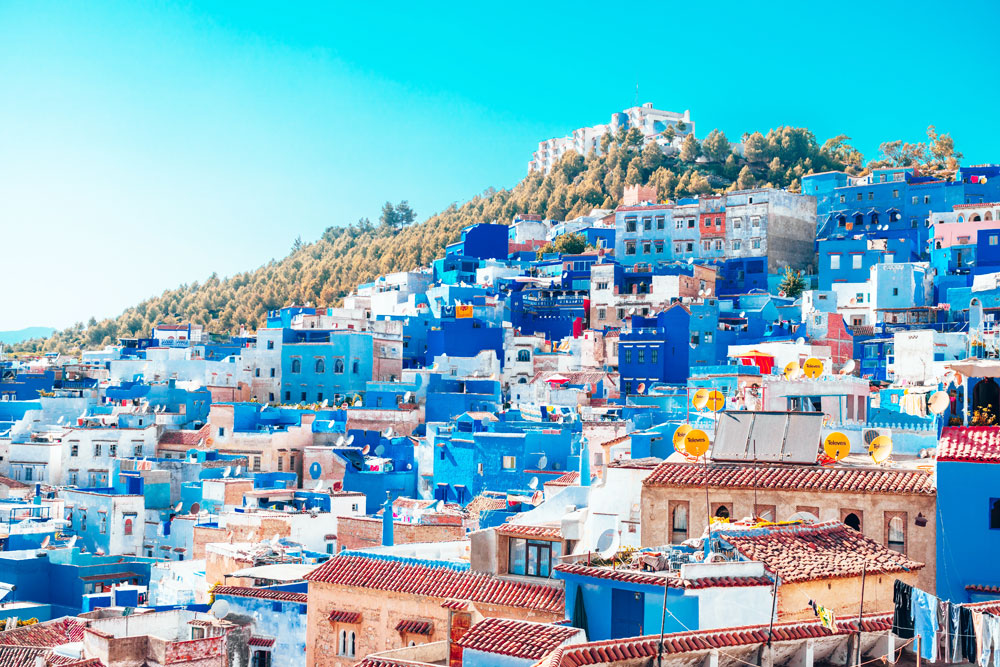
Cities
Morocco is home to some of the most beautiful cities in Africa, each with its own unique charm. Marrakech is one of the most popular cities to visit, with its bustling markets and stunning architecture.
Fes is another must-visit city, known for its ancient medina and colorful tanneries. Chefchaouen, with its blue-washed buildings, is a picturesque city that is perfect for exploring on foot. Other cities worth visiting include Rabat, Tangier, and Casablanca.
Deserts
No trip to Morocco is complete without visiting the Sahara Desert. The vast, golden sand dunes are a sight to behold, and there are plenty of opportunities for camel rides and desert camping. Western Sahara is worth visiting with its rugged landscapes and stunning sunsets.
Mountains
The Atlas Mountains are a must-visit for anyone who loves hiking and outdoor adventures. Stretching across Morocco for approximately 620 miles (1000km), this mountain range gracefully embraces Marrakesh from the south and east starting from the Atlantic Coast just north of Agadir and extending all the way to Khenifra in the northeast.
The High Atlas Mountains, North Africa’s tallest mountain range, are home to a variety of wildlife, including Barbary apes, ibex, and wild boar. The mountains are a popular destination for hiking, trekking, and mountaineering.
Coastline
Morocco’s Mediterranean coast is dotted with beautiful beaches and seaside towns. Agadir is one of the most popular beach destinations, with its long stretches of golden sand and clear blue waters. Other coastal towns worth visiting include Essaouira, Asilah, and Tangier.
Historical Sites
Morocco is home to a rich history and culture, with plenty of historical sites to explore. Marrakech’s Bahia Palace and Saadian Tombs are must-visit attractions, as are Fes’ Bou Inania Madrasa and Al-Attarine Madrasa. The Roman ruins of Volubilis are also worth a visit, as is the Kasbah of Ait Ben Haddou, a UNESCO World Heritage Site.
Overall, Morocco is a country with a rich culture, stunning landscapes, and plenty of history to explore. Whether you’re interested in hiking in the mountains, exploring ancient medinas, or relaxing on the beach, there’s something for everyone.
Festivals and Events
Morocco is renowned for its vibrant and colorful festivals that showcase the country’s rich culture and traditions. Attending one of these events can be a highlight of your trip, providing a unique insight into the local way of life. Here are some of the most popular festivals and events to consider when planning your visit:
Gnaoua World Music Festival
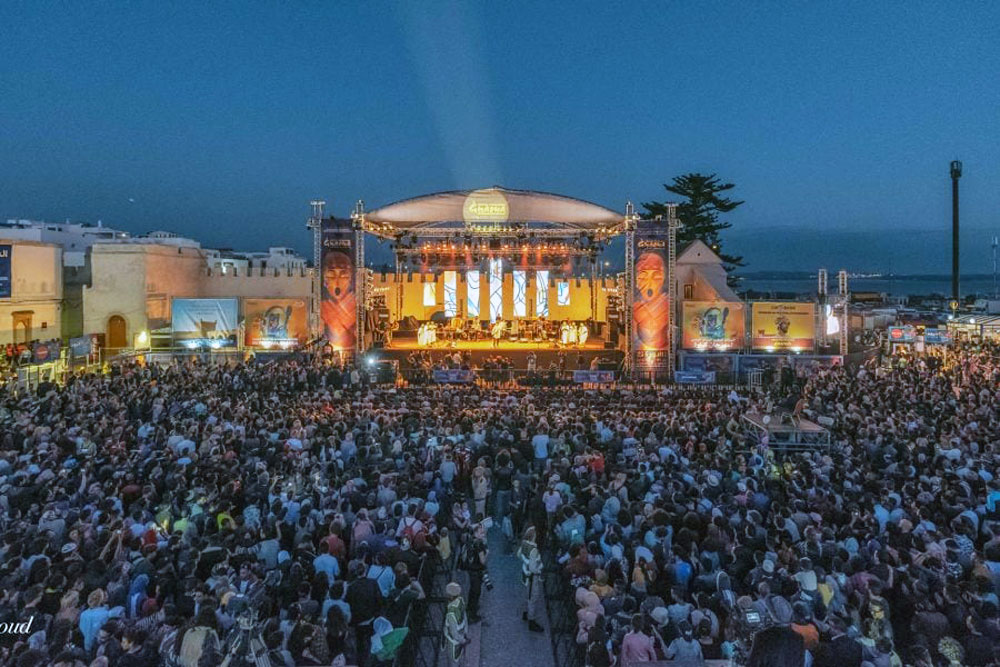
The Gnaoua World Music Festival takes place annually in Essaouira, Morocco, over the course of four days in June. The festival is a celebration of Gnaoua music, a traditional Moroccan music genre that originated with the descendants of West African slaves. It is now an integral part of Moroccan culture.
The festival takes place in Essaouira, a coastal city in western Morocco, and attracts musicians and visitors from all over the world. The event usually takes place in June and features a series of concerts, workshops, and exhibitions.
Fes Festival of World Sacred Music
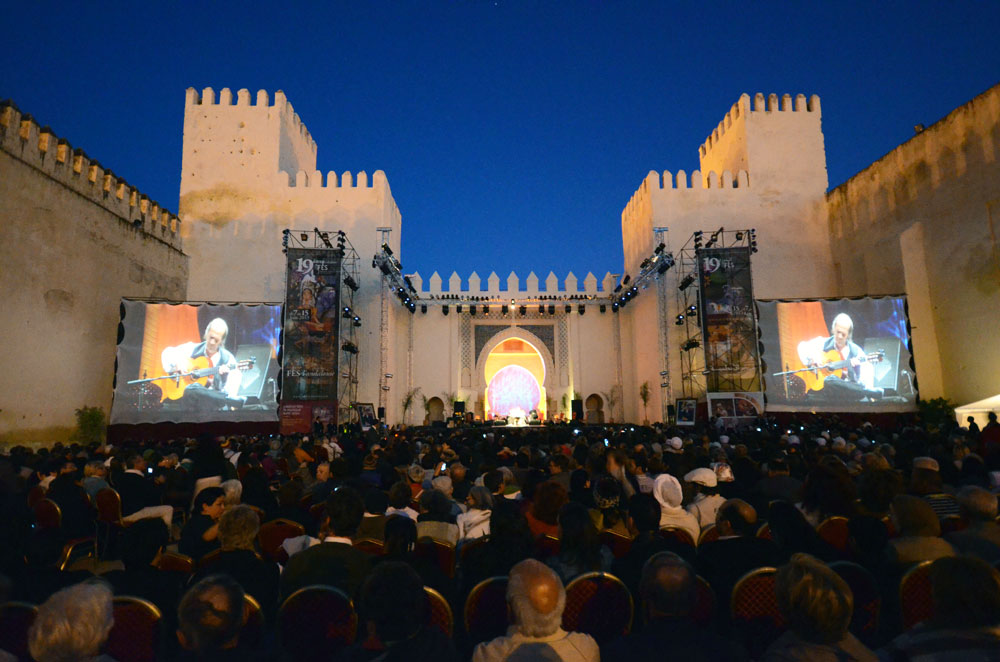
The Fes Festival of World Sacred Music is a unique event that brings together musicians and artists from different cultures and religions to celebrate their shared heritage. The festival takes place in the ancient city of Fes, which is known for its rich history and stunning architecture. The event usually takes place in early June and includes a range of performances, workshops, and discussions.
The festival has featured a wide range of artists from all over the world, including Joan Baez, Patti Smith, Björk, Ben Harper, Paco de Lucía, Ravi Shankar, Sabah Fakhri, Kadhem Saher, Mounir Bachir, Wadi al Safi, Jean-Claude Casadesus, and many others. It also promotes lesser-known talents and their creative projects.
The Fes Festival of World Sacred Music is a unique and special event, and it is a great opportunity to experience the culture and traditions of Morocco. If you are planning a trip to Morocco, I highly recommend visiting the Fes Festival of World Sacred Music. You will not be disappointed.
Imilchil Marriage Festival
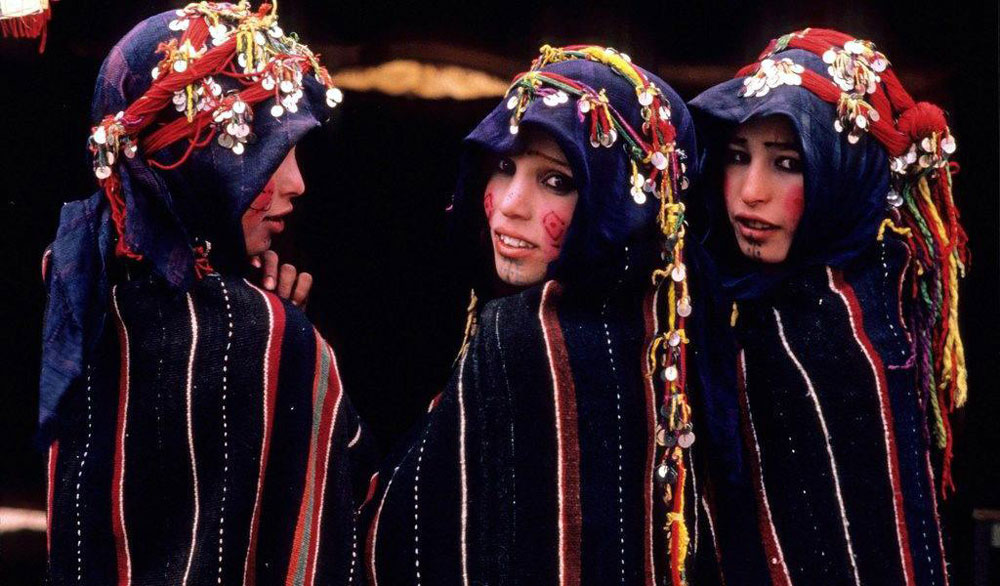
The Imilchil Marriage Festival is a traditional Berber event that celebrates the union of young men and women from different tribes. The festival takes place in the High Atlas Mountains and is a colorful and lively affair, featuring music, dance, and traditional dress. The event usually takes place in September and is a great way to experience the local culture and customs.
The Imilchil Marriage Festival is a centuries-old tradition, and it is said to have originated from a tragic love story. The story goes that two young people from different tribes fell in love, but their families did not approve of their relationship. The young people were so heartbroken that they ran away together and died of grief. Their deaths were so tragic that the surrounding tribes decided to hold a festival in their honor.
International Film Festival
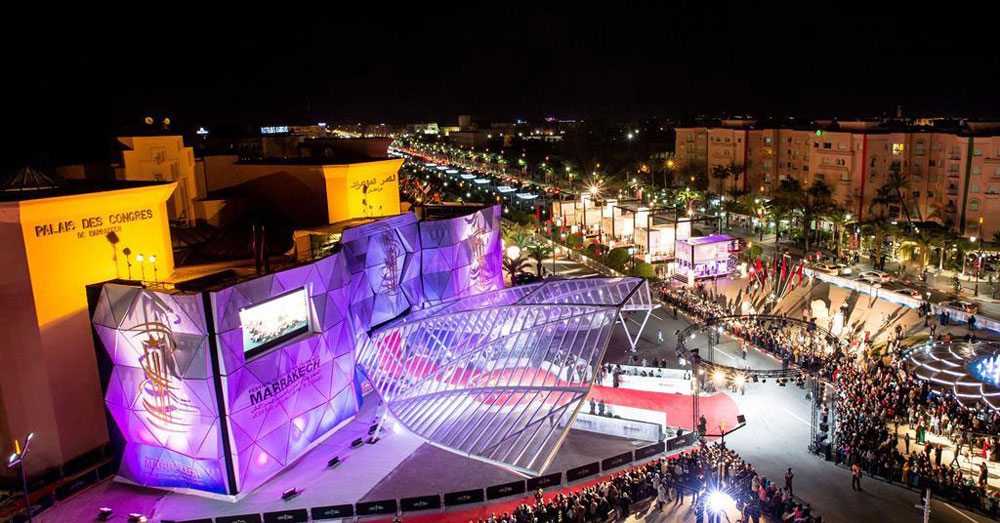
The International Film Festival is an annual event that takes place in Marrakech and attracts filmmakers and movie stars from around the world. The festival showcases the best of Moroccan and international cinema and features a range of screenings, workshops, and discussions. The event usually takes place in November and is a must-visit for movie lovers.
If you are interested in film, I highly recommend visiting the Marrakech International Film Festival. It is a great opportunity to see new films from all over the world, meet filmmakers and actors, and experience the culture and traditions of Morocco.
Rose Festival
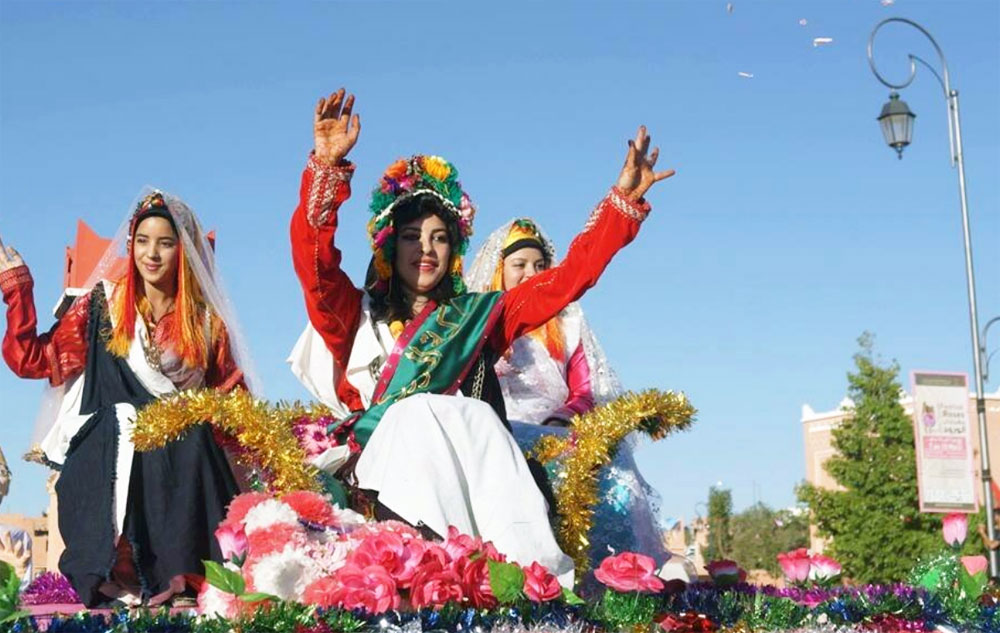
The Rose Festival is a celebration of the beautiful roses that grow in the Dades Valley, a scenic region in southern Morocco. The festival takes place in the town of El Kelaa M’Gouna and features a range of activities, including parades, music, and beauty contests. The event usually takes place in May and is a great way to experience the local culture and traditions.
Morocco is home to a wide range of festivals and events that offer a unique and unforgettable experience for visitors. Whether you’re interested in music, film, or cultural traditions, there’s something for everyone to enjoy. So why not plan your trip around one of these exciting events and make your visit to Morocco even more special?
Activities
Morocco is a country with a diverse landscape and culture, making it a great destination for travelers of all interests. Whether you’re looking to hike in the Atlas Mountains, surf the waves off the coast, or explore the ancient city of Fez, you’re sure to find something to enjoy in Morocco.
Hiking
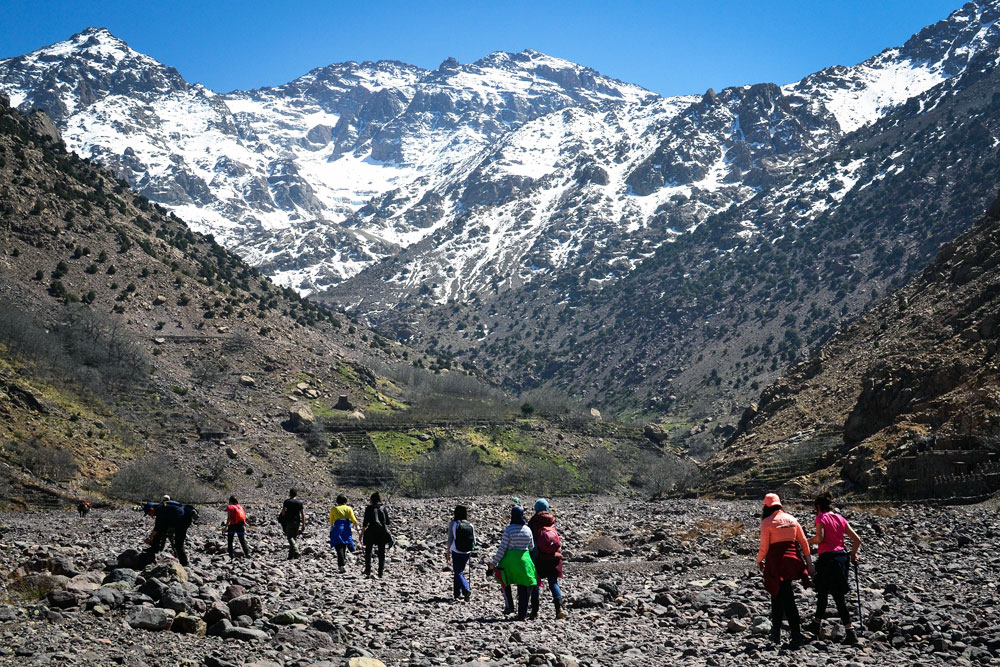
Morocco is a hiker’s paradise, with a variety of trails to suit all skill levels. The Atlas Mountains offer some of the most spectacular hiking in the country, with trails that wind through picturesque villages and stunning landscapes.
The Toubkal National Park is a popular destination for hikers, with the highest peak in North Africa, Mount Toubkal, offering a challenging climb.
Tips for hiking in Morocco:
- Bring plenty of water and snacks.
- Dress in layers so that you can adjust your clothing as needed.
- Wear sturdy hiking boots.
- Be aware of the altitude and take breaks as needed.
- Let someone know where you are going and when you expect to be back.
Skiing
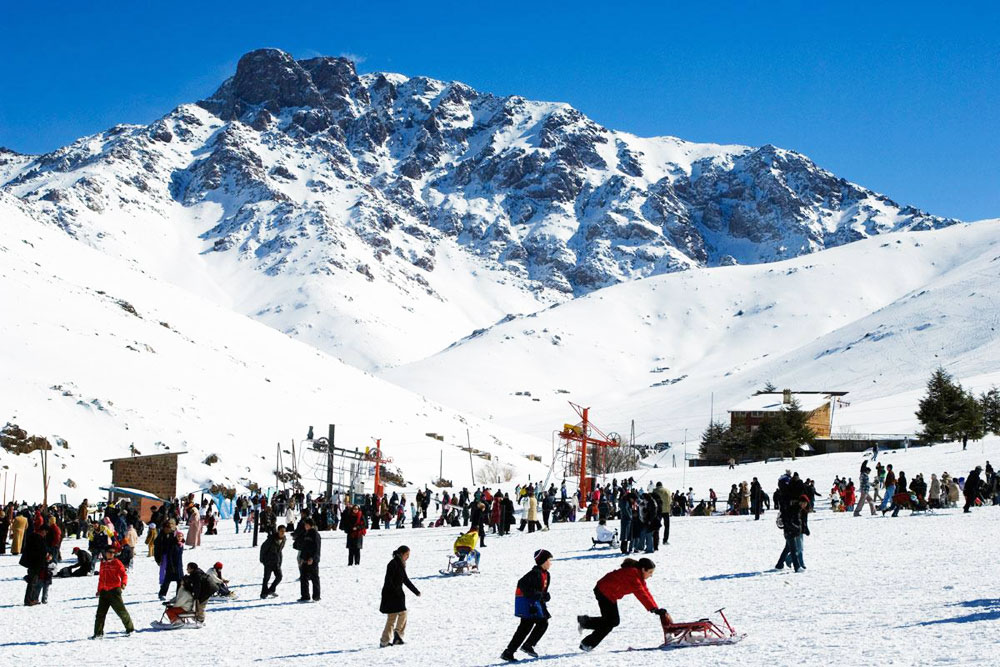
If you’re looking for a winter sport, skiing in Morocco might not be the first thing that comes to mind, but the country has some great ski resorts.
The Oukaimeden Ski Resort is located in the Atlas Mountains and offers a variety of runs for skiers of all levels. The resort is also home to the highest ski lift in Africa, offering stunning views of the surrounding landscape.
Tips for skiing at Oukaimeden Ski Resort:
- Check the weather forecast before you go: The weather in the High Atlas Mountains can change quickly, so it’s important to be prepared.
- Dress in layers: The weather can be cold at the top of the mountain, so it’s important to dress in layers so you can adjust your clothing as needed.
- Wear sunscreen: Even on a cloudy day, the sun can be strong at high altitudes, so it’s important to wear sunscreen to protect your skin.
- Drink plenty of fluids: The air at high altitudes is dry, so it’s important to drink plenty of fluids to stay hydrated.
- Take breaks: Don’t try to ski for too long without taking a break. Get off the slopes and rest every hour or so.
- Be aware of your surroundings: The slopes at Oukaimeden can be crowded, so it’s important to be aware of your surroundings and ski within your limits.
- Have fun! Oukaimeden is a beautiful place to ski, so relax and enjoy the experience.
Surfing
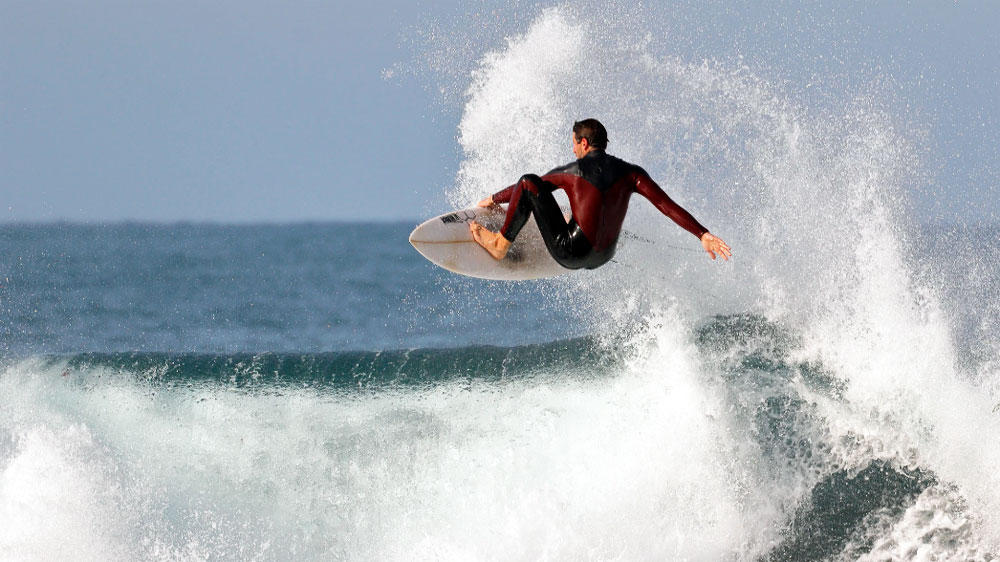
Morocco is a popular destination for surfers, with some of the best waves in the world. The coast around Taghazout is particularly popular, with a variety of breaks to suit all levels. The best time to surf in Morocco is during the winter months when the waves are strong and consistent.
Tips for surfing in Taghazout:
- Check the surf report before you go: The surf report will give you an idea of the conditions at the different surf spots.
- Dress appropriately: The weather in Taghazout can be warm, even in the winter, so it’s important to dress in layers so you can adjust your clothing as needed.
- Wear sunscreen: The sun can be strong in Taghazout, so it’s important to wear sunscreen to protect your skin.
- Drink plenty of fluids: The air in Taghazout is dry, so it’s important to drink plenty of fluids to stay hydrated.
- Take breaks: Don’t try to surf for too long without taking a break. Get out of the water and rest every hour or so.
- Be aware of your surroundings: The surf spots in Taghazout can be crowded, so it’s important to be aware of your surroundings and surf within your limits.
- Have fun! Taghazout is a beautiful place to surf, so relax and enjoy the experience.
Swimming
Morocco has a long coastline, with plenty of opportunities for swimming and sunbathing. The beaches around Agadir are particularly popular, with long stretches of golden sand and clear blue water. If you’re looking for something a little more secluded, head to the beaches around Essaouira, where you’ll find quiet coves and hidden bays.
Overall, Morocco is a great destination for anyone looking for adventure and outdoor activities. Whether you’re a seasoned hiker or a beginner surfer, you’re sure to find something to suit your interests.
Tips
Beat the Heat
If you’re planning to visit Morocco during the summer months, it’s important to take precautions to avoid the heat. The temperatures can reach up to 100°F (38°C) in some areas, so it’s recommended to stay hydrated and avoid being outside during the hottest parts of the day. You can also plan your activities for early morning or later in the evening when it’s cooler.
Cooler Temperatures
If you prefer milder temperatures, consider visiting Morocco during the spring or fall. The weather is warm but pleasant, and there are fewer tourists than during the summer months. In the winter, temperatures can drop to freezing in some areas, so be sure to pack accordingly if you plan to visit during this time.
Medinas
Morocco is known for its beautiful medinas, which are historic walled cities with narrow streets and bustling markets. If you plan to visit a medina, it’s important to dress modestly and be respectful of the local culture. You can also hire a guide to show you around and help you navigate the winding streets.
Hospitality
Moroccans are known for their hospitality and welcoming nature. If you’re invited into someone’s home, it’s customary to bring a small gift, such as pastries or tea. When visiting a mosque, be sure to remove your shoes and dress modestly. It’s also important to be respectful of local customs and traditions.
Overall, Morocco is a beautiful country with a rich history and culture. By following these tips, you can make the most of your visit and have a memorable experience.
Tips for visiting Morocco
- Stay hydrated during the summer months
- Plan your activities for early morning or later in the evening
- Dress modestly and be respectful of local customs
- Bring a small gift if invited into someone’s home
- Remove your shoes and dress modestly when visiting a mosque
Conclusion
In conclusion, the best time to visit Morocco is during the spring (March to May) or autumn (September to October) when the weather is warm and pleasant, with average temperatures ranging from 68°F – 77°F (20°C – 25°C).
The summer months (June to August) can be very hot and dry, with temperatures often reaching over 104°F (40°C) while the winter months (November to February) can be cold and wet, with average temperatures ranging from 50°F – 59°F (10°C to 15°C).
Here is a more detailed breakdown of the best time to visit Morocco, depending on your interests:
- For sightseeing and cultural activities: Spring and autumn are the best times to visit Morocco for sightseeing and cultural activities. The weather is mild and pleasant, and there are fewer tourists than in the summer.
- For hiking and trekking: The spring and autumn are also the best times to visit Morocco for hiking and trekking. The weather is mild and there is less chance of rain.
- For swimming and sunbathing: The summer is the best time to visit Morocco for swimming and sunbathing. The weather is hot and sunny, and there are many beautiful beaches to choose from.
- For skiing and snowboarding: The winter is the best time to visit Morocco for skiing and snowboarding. The Atlas Mountains are home to several ski resorts, including Oukaïmeden, which is the highest ski resort in Africa.
No matter when you decide to visit Morocco, you are sure to have a wonderful time. The country is full of stunning scenery, fascinating history, and friendly people.

